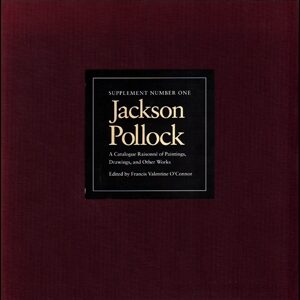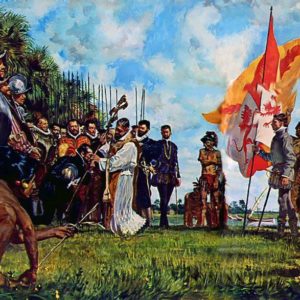
Jackson Pollock: A Catalogue Raisonné of Paintings, Drawings, and Other Works
Edited by Francis Valentine O’Connor (NHC Fellow, 1994–95) and Eugene Victor Thaw

Edited by Francis Valentine O’Connor (NHC Fellow, 1994–95) and Eugene Victor Thaw

By Ruth Bernard Yeazell (NHC Fellow, 2008–09) A picture’s title is often our first guide to understanding the image. Yet paintings didn’t always have titles, and many canvases acquired their names from curators, dealers, and printmakers—not the artists. Taking an original, historical look at how Western paintings were named, Picture Titles shows how the practice developed in … Continued
The airplane offered a potent symbol of man’s innovative thrust into the future. In the 1920s, artists depicted the airplane in canvases that, while creating quite different visual impressions, reflected the shared drive to depict the modern.
Where do “art” and “science” intersect in John White’s 16th century watercolors of Virginia? How would his paintings have been seen by his contemporaries? What impact did White’s work have on later generations?
Edward Hopper is regarded as the quintessential American realist painter of the twentieth century. His images — nighthawks in a clean, well-lighted cafe; a deserted street on a Sunday morning; a man, a woman alone in spare room, even when they are together — are deeply embedded in the American imagination. How do Hopper’s paintings … Continued

I was born in Boston and raised in New England. I attended an elite, all-girls, private school in New England, which was established in 1854 with the mission of turning out highly educated, capable young ladies, even before college was an option for all. So by the time I got there in the 1960s and … Continued

This mid-20th century oil painting, titled “Fishermen Mending Nets” by the artist Charles Poyer, depicts an elderly man repairing fishing nets by hand with tools located in a basket. The young boy watches with intrigue and appears ready to learn. This customary activity is occurring by the beach, imparting a sense of calm and peace … Continued

Answering the question whether a humanities moment looks different across generations, David Denby shares an example of such a moment he and his son experienced together at the Art Institute of Chicago.

From reading Crime and Punishment as a high school senior and the Depression-era masterpieces Absalom, Absolom! and Let Us Now Praise Famous Men in college, Gil Greggs describes a personal journey of discovery about the ways literature connects readers to the real world. Later, he describes how the portraits painted by Rembrandt and photographs taken … Continued

In what I believe was the latter part of the 1980s, I was dragged, kicking and screaming, to a van Gogh exhibition at the Metropolitan Museum. And for the first time in my life, I wore one of those machines around my neck, where you listen to headphones and you hear somebody describe what it … Continued